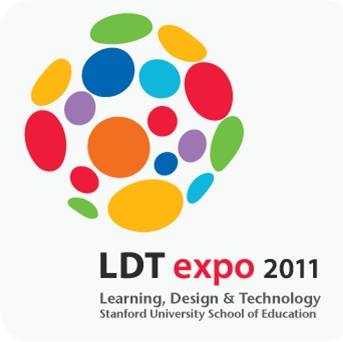
CONTACT: Karin Forssell, Learning, Design & Technology Program Director, (650) 723-3340, forssell@stanford.edu
RELEVANT URLS: Learning, Design and Technology Program: http://ldt.stanford.edu
Stanford, CA – Stanford University School of Education's Learning, Design and Technology (LDT) program invites the public to attend its Master’s Project Exposition on Friday, July 29 from 4 to 7 p.m. at Wallenberg Hall, Building 160 on the Main Quad on the Stanford campus. Students will present their projects demonstrating the latest designs of technology-enhanced learning experiences.
The annual expo represents the culmination of a year’s worth of study devoted to the design of breakthrough tools that enhance student learning. They tackle serious learning problems, including barup.mobi: The ‘Rap Game’ in a Game (Leonard Medlock and Demetric Sanders). Designed to foster literacy skills among inner-city youth, barup.mobi lets players generate lyrical rap content, and experience peer-review through competition with other networked users.
Other designs approach old educational challenges with fresh perspectives:
These and six other master's projects will be featured at this year's expo.
“Students in the LDT program acquire unique knowledge and skills, applying what is known about how people learn to the design of interactive educational media and experiences,” says Milton Chen, executive director of The George Lucas Educational Foundation and an advisory board member of the master’s program. “The LDT projects illustrate how this cohort is mastering 21st century skills of organizing knowledge to create learning environments using new technologies—skills very much in demand in business, education, and the nonprofit world.”
Industry professionals, LDT alumni and advisory board members, and faculty from departments across Stanford will evaluate the students' projects in the closed presentation portion of the event. Reviewers include industry experts from IDEO, LeapFrog, Sifteo, and Global English; teachers from local schools; and faculty from several universities as well as Stanford's School of Education, the “d.school,” and the computer science and linguistics departments.
Other learning designs featured at the Expo include:
Now in is fourteenth year, Stanford's LDT master's program prepares professionals who will bring powerful contemporary ideas about learning to the design of technology-based products, settings, and social arrangements for learning. The program provides students with an intensive year of study in the basics of learning, design and technology, including a yearlong internship and course work. Students who complete the one-year program earn the degree of Master of Arts in Education. For more information about the LDT program, visit http://ldt.stanford.edu. For directions to the expo, see http://campus-map.stanford.edu/index.cfm?ID=01-160.
-30-
Subscribe to our monthly newsletter.